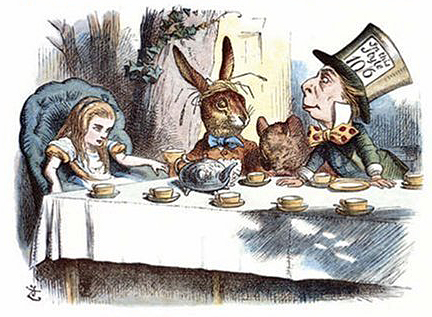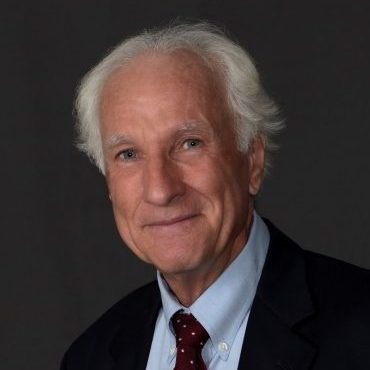“The Mad Hatter’s tea party was amusing as fiction. But if the Administration chooses to join in, we will all pay a very high price. And that’s no joke.”
 Sensing an opening after the Biden Administration’s recent Executive Order put a hold on a pending regulation prohibiting the misuse of the march-in rights provision of the Bayh-Dole Act for price control, Congressional opponents of the law dusted off a ploy that failed in the Obama Administration to try their luck again. They’ve written to Secretary of Defense Lloyd Austin and Health and Human Services Secretary Xavier Becerra urging them to march in to control prices of drugs created from inventions arising from R&D their agencies supported.
Sensing an opening after the Biden Administration’s recent Executive Order put a hold on a pending regulation prohibiting the misuse of the march-in rights provision of the Bayh-Dole Act for price control, Congressional opponents of the law dusted off a ploy that failed in the Obama Administration to try their luck again. They’ve written to Secretary of Defense Lloyd Austin and Health and Human Services Secretary Xavier Becerra urging them to march in to control prices of drugs created from inventions arising from R&D their agencies supported.
We likened that aspect of the Executive Order to shooting ourselves in the foot, and it seemed as though it would be a while before we would know if the Administration would pull the trigger or not. With the recent Congressional actions, the day of reckoning may not be far off.
Impossible Things
It initially seemed appropriate to compare the repetitious moves of the critics to the movie Groundhog Day, where the same things keep happening over and over. However, upon further reflection, it’s more like Alice in Wonderland—an analogy all too familiar in the patent world. Because for this ploy to succeed, as the White Queen proclaimed, we’d have to believe several impossible things before breakfast.
Here are a few of them:
- That the opponents of Bayh-Dole uncovered a secret meaning in the law 20 years after its enactment. When Senators Bayh and Dole immediately pushed back that this theory was absurd, they were accused of being corrupt. We discussed how despicable this attack was, but if you can’t win on facts, some folks have no problem attacking those who can no longer defend themselves.So, the first—and biggest—fable is being willing to believe that those who’ve done everything they could to kill the law know more about how it works than those who created it.
- Then you must accept that even though there’s nothing in the legislative history supporting the opponents’ theory and the wording of the statute doesn’t support it either, that this is only a technicality that can be overcome by simply making the same claims over and over and over.We’ve tracked how the law works and shown that the theory of the critics doesn’t hold water. But those determined to overthrow Bayh-Dole believe, like another Lewis Carroll character, Humpty Dumpty, that: “When I use a word…in a rather scornful tone, it means just what I choose it to mean—neither more nor less.” It’s hard to argue with people like that.
- Next you must accept that the government would establish a procedure right out of the court of the Red Queen (verdict first, trial later) where the private sector developer of the invention would be accused of not selling the product at a “reasonable price,” an undefined term because that’s not how the law works. Thus, the company would have to defend itself against a completely arbitrary charge, with competitors queuing up saying how much cheaper goods would be if the government granted them a license to copy the invention.The bureaucracy (most of whom have never made anything in their lives) would then pull out of thin air the magical reasonable price that should be charged for any given product. If the developer can’t meet it, the government would license others who can.
- And that leads up to the greatest fantasy of all. In the alternative universe of the critics, entrepreneurs would continue to spend their time and treasure developing federally funded inventions into useful products knowing that once they succeed (and most times they will not) that anyone can file a petition claiming their price isn’t “reasonable” so the government should march in.Of course, this theory is right out of Animal Farm where the horses labor until they die, and the pigs decide who gets the reward. Some apparently think this will work better if the horses are simply prodded harder.
Unfortunately, there is a lot more at stake than an exercise in fictional allegories. The symbiotic partnership between our public and private sectors underpins both our economy and our well-being. It’s nothing short of astonishing that less than a year after these partnerships created the most effective COVID-19 vaccines in the world (which the Administration touts daily as essential for preserving both our health and our economy) the system which created them is under attack from some of those who have benefitted the most.
Down the Rabbit Hole
The Biden Administration’s actions supporting the giveaway of our COVID-19 inventions and know-how to our rivals, coupled with the language in the recent Executive Order on march-in rights, makes it appear these hard-won lessons are in real jeopardy of being ignored.
Up until now, every Administration for the last 20 years (including the Obama-Biden Administration) has rejected attempts to misuse march-in rights for price control as unauthorized under the law.
How ironic (and tragic) would it be if President Biden, who supported Bayh-Dole when he was a member of the Senate Judiciary Committee, chose to go down the rabbit hole with the critics. The Mad Hatter’s tea party was amusing as fiction. But if the Administration chooses to join in, we will all pay a very high price. And that’s no joke.
Public Domain
File:John Tenniel- Alice’s mad tea party, colour.jpg
Created: 1 January 1865

![[IPWatchdog Logo]](https://ipwatchdog.com/wp-content/themes/IPWatchdog%20-%202023/assets/images/temp/logo-small@2x.png)

![[Advertisement]](https://ipwatchdog.com/wp-content/uploads/2024/04/UnitedLex-May-2-2024-sidebar-700x500-1.jpg)
![[Advertisement]](https://ipwatchdog.com/wp-content/uploads/2024/04/Artificial-Intelligence-2024-REPLAY-sidebar-700x500-corrected.jpg)
![[Advertisement]](https://ipwatchdog.com/wp-content/uploads/2024/04/Patent-Litigation-Masters-2024-sidebar-700x500-1.jpg)

![[Advertisement]](https://ipwatchdog.com/wp-content/uploads/2021/12/WEBINAR-336-x-280-px.png)
![[Advertisement]](https://ipwatchdog.com/wp-content/uploads/2021/12/2021-Patent-Practice-on-Demand-recorded-Feb-2021-336-x-280.jpg)
![[Advertisement]](https://ipwatchdog.com/wp-content/uploads/2021/12/Ad-4-The-Invent-Patent-System™.png)






Join the Discussion
One comment so far.
CR
August 5, 2021 12:57 pmIt is sad that the statutory language of making the technologies “available to the public on reasonable terms” seems to always involve medical technologies. The U.S. pays more than double for the same healthcare technologies found in comparable high-GDP countries, and it’ll take far more thought and effort than a strained interpretation of Bayh-Dole to fix this.
If one were truly interested in normalizing prices, a start would be to correct a statutorily-enshrined swindle by allowing Medicare to negotiate with drug-makers. Such negotiation was banned in the Medicare Modernization Act of 2003, which itself passed the House by an essentially Republican party-line vote before being signed by G.W. Bush.
Repealing Bayh-Dole would have little effect on the larger issue, and could essentially throw the baby out with the bathwater. Most inventions and licenses relate to technologies other than drugs. That said, the fact that Bayh-Dole is patent-centric may also negate the effects of repeal.
This is because the valuable IP that is the subject of an increasing percentage of deals is decidedly not patents. With the notable exception of the pharmaceutical field, patents have simply become weaker and less relevant to technology transfer and IP commercialization. Data sets, algorithms, software, SOPs, know-how, design files/specs, etc are the more valuable (and more licensable) form of IP; and so the patent-centric nature of Bayh-Dole may shield any damage repeal would do.
That said, I would still support the agencies to include some modest form of price control language in their licenses, focused solely on sales to instrumentalities of the US Government. For example, it would make sense to include language that required the licensee to charge the USG a price “no higher” than that charged other private sector customers for the same products of similar quantity.